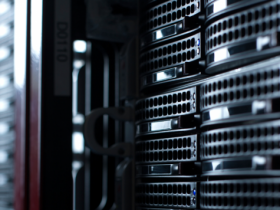Internet giant Microsoft has been exploring the possibility of building an underwater data center at the private California Cal Poly Pier. Last year, officials from the tech giant came to the central coast on multiple occasions from August to November 2015. They were attempting to determine if this location is right for the construction of a large, underwater data center storage facility that may be the future of cloud storage.
Officials at the company are looking into the possibility of using the pier area as a space for an underwater data center in order to provide their customers with access to data more quickly and easily than ever.

Cooling Ocean Water
While most people tend to think that water and electronics are not exactly an ideal combination, this is not necessarily true. Microsoft officials are trying to determine if the ocean can actually act as a free cooling source and a form of air conditioning. Data centers, usually called cloud centers, tend to give off huge amounts of heat while operating. The excessive heat can cause serious problems with transmission of data if it not cooled down properly all the time.
Keeping a data center cool to help it remain functional has sometimes been a challenge for the computing company and has caused occasional problems with loss of data and the need for highly expensive air conditioning systems. To that end, staffers here have been exploring other ways to help cool down the components the company uses without the need for vast amounts of energy.
Project Natick
Staffers at Microsoft spent three months at the Cal Poly pier looking into the possibility of submerging the necessary equipment for a cloud data center in the waters just off of Avila Beach. To this end, they placed a submerged capsule that they hope will be a prototype for future data storage efforts underneath roughly thirty feet of ocean water.
The 10 feet by 7 feet capsule was enclosed by a 38,000 pound container designed to protect the contents from the ocean waters. Called Project Natick after a character in the company’s popular Halo video game, the container was left in the water for 105 days. During this time, it was closely monitored by Microsoft officials to see how well it functioned.
Cal Poly Pier
The Cal Poly pier was picked by Microsoft for the initial research for many reasons. The beach is closed to the public, making it possible to conduct private research here. The beach also has an industrial electrical system in place. The system is used by university officials for research efforts. Microsoft officials tapped into the existing infrastructure to provide power for the project.
The existing pier also extends roughly a kilometer into the ocean, allowing officials to get easy access to the site they had picked under thirty feet of water. Officials at Cal Poly provided the team with minor support for their efforts. In turn the company paid $130,000 for access to the pier and technical assistance.
Katrina specializes in products for the leading custom design and manufacturing of racking products for your tech needs at Rack Solutions
























